The mud was waist deep. There was shouting, confusion, and smoke. Exhausted cadets set a perimeter around the simulated casualty as the urgent order from the platoon leader to move out was yelled across the wet, marshy field. They had miles to go until they were done.
Platoon Tactical Challenge 2024 was going as planned and Cadet Charley Longerbeam watched as three months of careful coordination played out. The event on March 16, organized yearly by cadets, was designed to test critical leadership and decision-making skills during stressful and physically demanding scenarios.
Longerbeam, an architecture major in the College of Architecture, Arts, and Design and a member of Naval ROTC, is the regimental operations officer for the Virginia Tech Corps of Cadets and it is her responsibility to plan and execute regimental activities.
“We started planning Platoon Tactical Challenge prior to the first week of classes for the spring semester. The most challenging aspect was presenting our ideas to a larger audience, especially the commandant’s staff. Ensuring that our vision made it through everyone was especially important in the planning phase,” said Longerbeam.

The exercise spanned the Blacksburg campus, sending cadets running from the Drillfield to five stations miles apart, including the corps’ rappel tower and obstacle course, finally ending back on the Drillfield.
The planning phase also included safety and logistics at those stations and along the over 4-mile route. Tasks such as coordination for drinking water, transportation of supplies and meals for cadets managing the stations, first-aid support, contingency planning, and more had to be addressed during planning and the event itself.
The mud, though not scripted, was a bonus.
A main concern during the event was timing. With 14 platoons of 42 cadets running the route, one small misstep in timing could potentially derail the entire day.
“My biggest concern was the timing factor. Although we planned buffer time and communicated clear instructions to stations and cadet staff, there was always a chance that a pile-up could happen,” said Longerbeam.
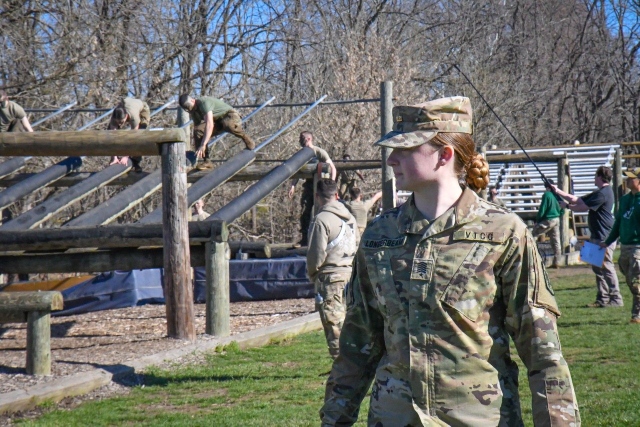
No such pile up happened, but emphasizing the intricacies of operational planning is one of the many training goals within the corps.
“It’s essential that events like Platoon Tactical Challenge and other training evolutions be planned and executed by cadets. They get hands-on experience developing a plan from conception to completion, working to account for uncertainties, and learning how to overcome any challenges that happen that day,” said Ken Mallory, director of the corps’ Citizen-Leader Track, who served as the faculty advisor for Platoon Tactical Challenge.
The stations were designed by a groups of cadets, and the details were not released to participants before platoons arrived.
At the rappel tower, cadets from Rappel Committee, many of whom earned their rescue rappel and rappel master certifications through corps trips over Thanksgiving and winter break, supervised platoon members as they climbed a vertical 20-foot tower using a prusik knot and then rappelled down a 40-foot tower.
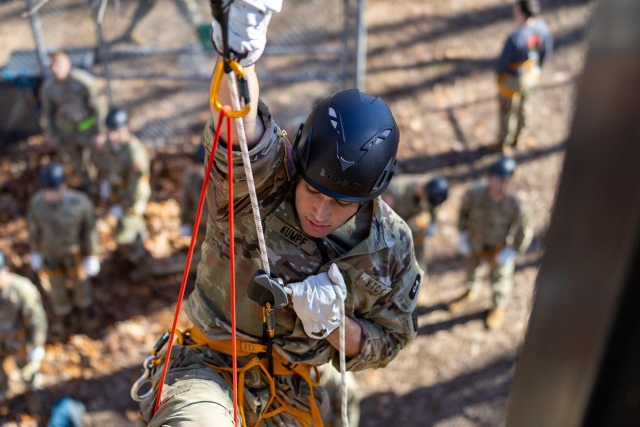
The second station was run by the Virginia Tech Army ROTC cadet organization Ranger Company. There, platoon members faced a memory challenge. They were given 30 seconds to view a 16-square pattern of military patches. The patches were then removed, and the platoon was divided into squads to complete activities including carrying weighted stretchers, weighted sled pulls, and a Humvee push, executed as many times as possible in a given period to accrue points. Once those events were completed, the platoon reassembled and had one minute to correctly place the military patches onto the square pattern to accrue additional points.
From there, cadets moved to the third station: a simulated combat casualty evacuation run by Marine-option members of Naval ROTC. Amidst smoke, mud, tall grass, noise, and simulated counterattacks, the platoon, supplied with non-firing rubber M-16s, had to rescue a cadet simulating an injury, and move to an evacuation point to complete a request for evacuation using a scripted military format. The station ended with a low crawl under barbed wire and a creek crossing.
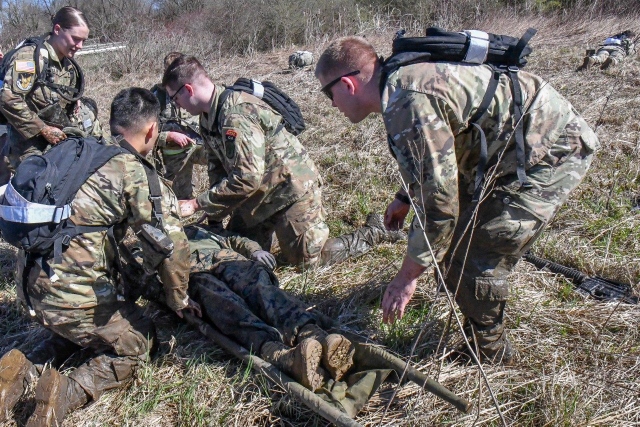
The next station, run by the Air Force ROTC organization Air Force Special Operations Preparation Team, entailed communicating positions of stationary targets while interacting with cadets role-playing as local residents. Once the positions were determined, they were shared with others in the platoon who engaged the targets with water balloons, scoring points for their team.
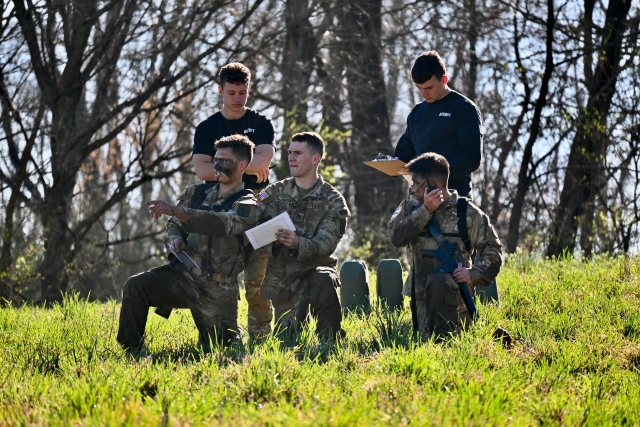
The obstacle course was last, and that station was designed by the cadet-run Obstacle Course Team. Consisting of memorization puzzles and physical challenges, the event was created to test the stamina and mental fortitude of cadets who had already completed miles worth of exercises. Initial instructions for the station first had to be retrieved from the top of the Tough One obstacle, a 40-foot-high combination of ropes, nets, and elevated beams. Once retrieved, the instructions explained how cadets would need to memorize combinations hidden on obstacles throughout the course to unlock boxes at the end of the course. The more boxes unlocked using the memorized codes in the 20-minute period yielded more points for the platoon.
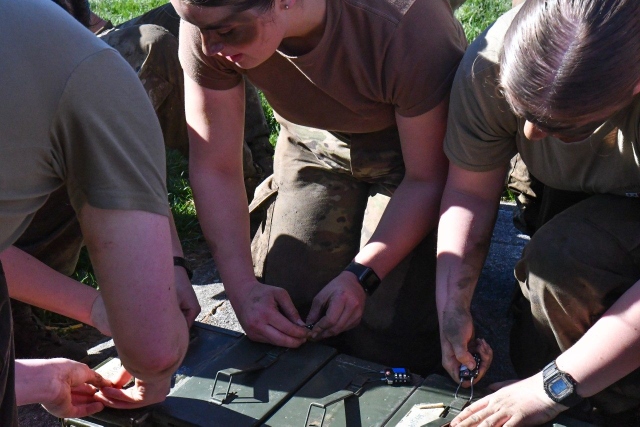
Though the winning platoon will not be announced until the annual awards ceremony for the corps in late April, the success of the day was immediately evident in the exhausted smiles of cadet participants and planners.
“Now that the event is over, my biggest takeaway was that without the unity created between myself and the station leaders, the day would have never gone as smoothly as it did. Communication and clarity were so important for us as a team. We met several times, and looking back, that is what saved us. I will never forget what the power of a cohesive team can do,” said Longerbeam.
Maj. Gen. Randal Fullhart, commandant for the Corps of Cadets, has seen his fair share of Platoon Tactical Challenges in his 13 years at Virginia Tech.
“The best part of Platoon Tactical Challenge is that every aspect of the corps organization, from the regimental commander down to the first-year cadets have to function well for this to be a successful operation. This year’s Platoon Tactical Challenge was the best planned and executed one since I’ve been here. It was clear that the cadets in the platoons had taken the time to prepare and be ready for the unknowns they would face,” said Fullhart.
Platoon Tactical Challenge “is a dynamic event with many parts, pieces, and participants. Cadet Longerbeam and her team were able to plan and implement an event that involved 1,000 cadets. That’s a monumental undertaking. The real reward for cadets in this entire process is the experience they get leading up to the event, and working together to plan for mission success,” said Mallory.
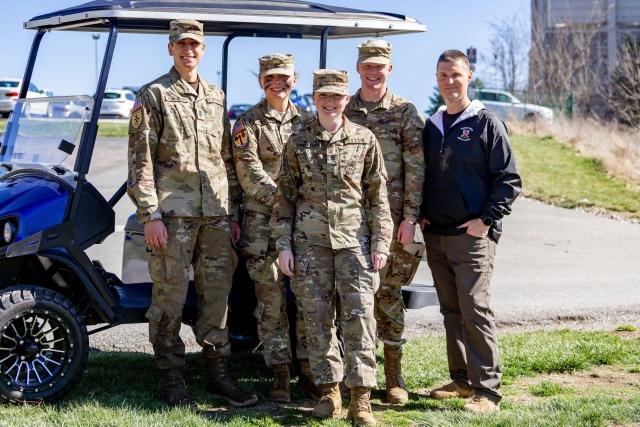
By Katie Mallory

